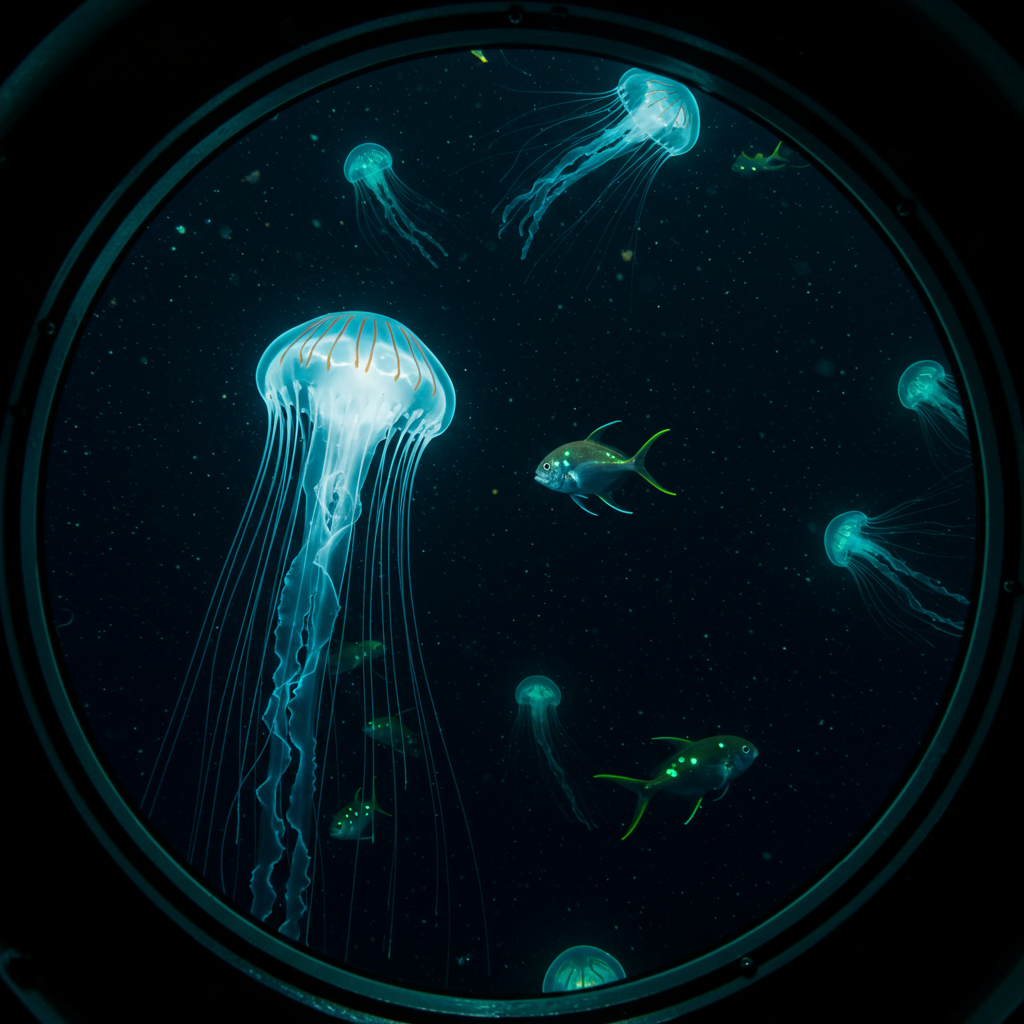The ocean’s deepest, most enigmatic realms have long been considered barren, unforgiving environments where life struggles to persist. However, a groundbreaking new expedition has completely reshaped this understanding, revealing surprisingly vibrant and extensive communities of deep-sea creatures thriving at extreme pressures and in perpetual darkness. This monumental discovery challenges long-held scientific assumptions about the absolute limits of life on Earth, opening up thrilling new avenues for marine biology research.
Unveiling Life in the Hadal Zone: Earth’s Final Frontier
The deepest parts of our oceans are home to profound geological features known as Hadal trenches. These incredible underwater canyons, reaching depths of over 36,000 feet (11 kilometers), represent some of the most extreme habitats on the planet. Here, life contends with immense crushing pressures, temperatures near freezing, scarce food resources, and a complete absence of sunlight. Scientists previously knew that microscopic life, like tiny microbes, could endure these harsh conditions. Yet, clear evidence of larger, complex marine organisms thriving in such extensive networks remained elusive—until now.
Groundbreaking Discoveries in the Northwest Pacific
A recent expedition, spearheaded by researchers from the Chinese Academy of Sciences and the Russian Academy of Sciences, embarked on an ambitious voyage into these deep-sea frontiers. Utilizing advanced submersibles, including the human-occupied Fendouzhe, scientists explored the Kuril–Kamchatka and Aleutian trenches in the northwest Pacific Ocean. The Fendouzhe allowed unparalleled observation, filming, and photography at depths exceeding 10 kilometers for extended periods.
At astonishing depths of over 31,000 feet (9.5 kilometers)—remarkably close to the ocean’s deepest point—the team documented flourishing communities of complex life. Among the incredible finds were dense colonies of long, thin tubeworms, some reaching up to 30 centimeters in length, and various mollusks. The discoveries extended to “beds of clams, mats of bacteria that look like ice, and fields of tube worms,” alongside white, spiky creatures identified as Macellicephaloides grandicirra. These observations not only confirmed earlier suspicions of larger life forms at such depths but also revealed the unexpected diversity and sheer scale of these deep-sea communities. As deep-sea microbiologist Julie Huber of Woods Hole Oceanographic Institution noted, the sheer number, varying appearances, and depth of these creatures in a previously inaccessible realm are truly significant.
The Mystery of Survival: Chemosynthesis in the Abyss
A central puzzle of deep-ocean biology has always been how life sustains itself without sunlight, which powers photosynthesis at the surface. Traditionally, many deep-sea organisms rely on organic carbon—dead matter and waste—that slowly trickles down from the sunlit upper layers of the ocean. However, the energy source for these newly discovered trench-dwelling communities appears to operate on a different, more localized principle: chemosynthesis.
Scientists hypothesize that microbes in these trenches play a crucial role. Instead of relying solely on falling organic matter, these microbes appear to capitalize on carbon that has accumulated in the trenches over geological time. They process this accumulated carbon, generating vital chemicals like hydrogen sulfide and methane. These chemicals then seep through cracks in the ocean floor, creating a localized energy source. The larger organisms, such as the tubeworms and mollusks, are believed to survive by either consuming these microbes directly or by forming symbiotic relationships with them, benefiting from the chemical byproducts of their metabolic activities. This unique method of energy harnessing highlights the incredible adaptability of life to Earth’s most challenging environments.
Challenging Scientific Assumptions About Life’s Limits
The existence of such vibrant and extensive communities of deep-sea creatures fundamentally challenges long-standing assumptions about life’s potential at extreme depths and pressures. Study authors Mengran Du from the Chinese Academy of Sciences and Vladimir Mordukhovich from the Russian Academy of Sciences emphasize that these findings “challenge current models of life at extreme limits and carbon cycling in the deep ocean.” They suggest that trench-dwelling life forms “may be more widespread than previously anticipated.”
This discovery isn’t just about finding new species; it’s about re-evaluating our understanding of extremophiles and the mechanisms that allow life to flourish where it seems impossible. Professor Andrew Sweetman, a senior scientist from the Scottish Association for Marine Science, suggests that entire “ecosystems driven by methane may exist in the deepest parts of the ocean,” further expanding the implications of these findings. It underscores the incredible resilience and inventiveness of biological systems.
Future Frontiers in Deep Ocean Exploration
This groundbreaking expedition marks a new chapter in deep-ocean exploration. Future studies will concentrate on unraveling the specific adaptations that allow these unique deep-sea creatures to survive under such crushing pressures and in complete darkness. Researchers aim to precisely understand how they harness chemical reactions for sustenance and how these chemosynthetic ecosystems function in their entirety.
The continued exploration of these Hadal environments promises to reveal even more about the planet’s biodiversity and the astonishing ways life finds a way to thrive. Understanding these extreme ecosystems also offers insights into potential extraterrestrial life, as similar conditions might exist on other celestial bodies. The deep ocean remains Earth’s last great unexplored frontier, brimming with secrets yet to be uncovered.
Frequently Asked Questions
How do deep-sea creatures survive without sunlight?
Many newly discovered deep-sea creatures, particularly those found in ocean trenches, survive through a process called chemosynthesis. Unlike surface life that relies on photosynthesis powered by sunlight, these organisms thrive in perpetual darkness. They depend on microbes that process accumulated carbon in the trenches, generating chemicals like hydrogen sulfide and methane that seep from the ocean floor. Larger organisms, such as tubeworms and mollusks, then consume these microbes or form symbiotic relationships with them, utilizing the chemical byproducts as their primary food source.
Where were these new deep-sea life forms discovered?
These remarkable new deep-sea life forms were discovered during an expedition to the Kuril–Kamchatka and Aleutian trenches, located in the northwest Pacific Ocean. Researchers utilized advanced submersibles, including the human-occupied Fendouzhe, to explore these extreme environments. Observations were made at incredible depths exceeding 31,000 feet (9.5 kilometers), revealing thriving communities of organisms in some of the deepest parts of the ocean, which were previously thought to be largely barren of complex life.
Why are these deep-sea discoveries so important to science?
These deep-sea discoveries are profoundly important because they challenge long-standing scientific assumptions about the absolute limits of life’s potential on Earth. They reveal that complex, thriving ecosystems can exist in environments previously considered too harsh due to immense pressure, lack of light, and scarce food. This expands our understanding of biological adaptability, chemosynthetic processes, and carbon cycling in the deep ocean. It also opens new avenues for research into extremophiles and offers insights into how life might potentially survive in similar extreme conditions found on other planets or moons.
The ongoing exploration of these deep-sea realms continues to push the boundaries of what we know about our own planet’s vast and mysterious ecosystems.




